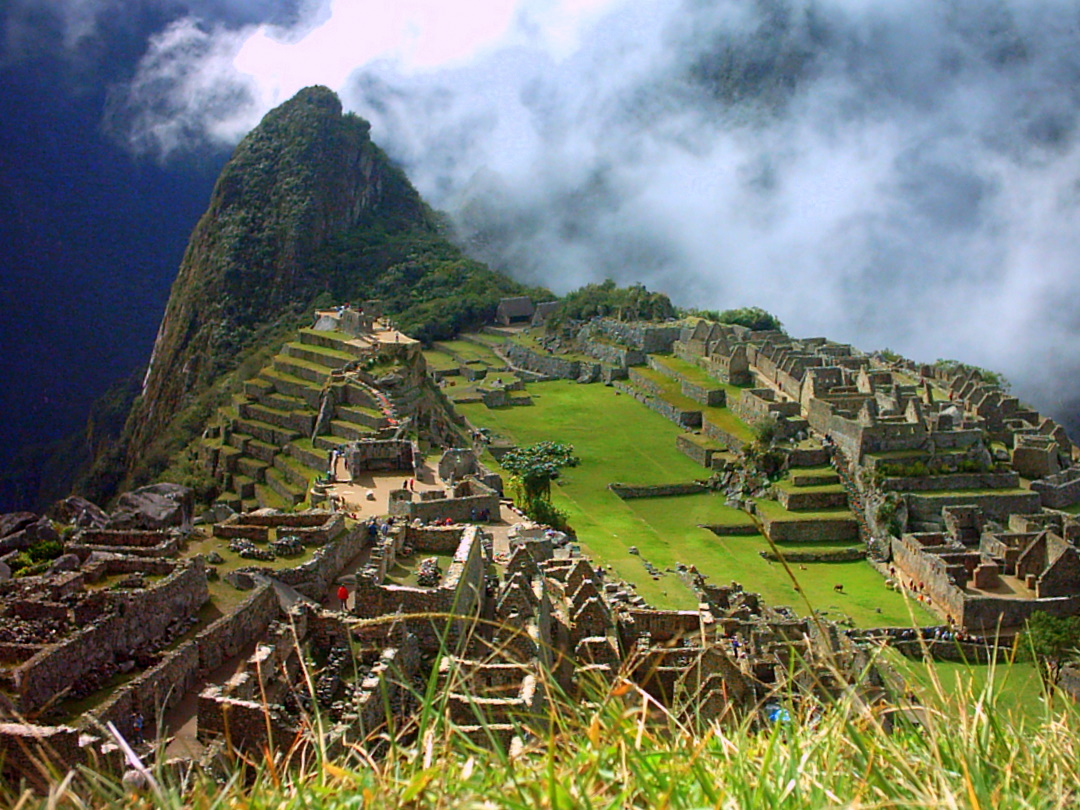Mercado de Pisaq
Ubicado en Pisaq a 30 km. De Cuzco, es uno de los mercados de artesanía más grande del Perú.
 El Mercado de Pisaq es un mercado dominical (aunque funciona casi diario), es un punto de encuentro de los pobladores de las comunidades locales; quienes vienen a presenciar la misa en quechua, socializar y a vender o intercambiar mercancías.
El Mercado de Pisaq es un mercado dominical (aunque funciona casi diario), es un punto de encuentro de los pobladores de las comunidades locales; quienes vienen a presenciar la misa en quechua, socializar y a vender o intercambiar mercancías.Pisaq, al igual que otros poblados fue una ciudad española donde se fusionaron tradiciones europeas con Incas que permanece en pie hasta hoy desde el día de su fundación en el siglo 16. Con el tiempo Pisaq se ha convertido en un importante centro de producción artesanal y ha alcanzado la fama de tener uno de los mercados artesanales más grandes de Latinoamérica.
Ciudadela de Pisaq
De mayor extensión que Machu Picchu y a la vez tan impresionante como esta, Pisaq fue una ciudadela Inca formada por 6 áreas diferentes ubicadas al pie de las montañas y con una vista privilegiada al Valle Sagrado. Incluye un sistema de caminos, acueductos, muros Incas, andenería y portales de piedra.

Aquí disfrutará de una impresionante caminata, lo llevaremos hasta la cima de la colina donde está ubicada la ciudadela y podrá explorar los diferentes complejos arquitectónicos y notar las diferencias de estilo entre unos y otros además de sorprendentes obras de ingeniería y arquitectura. Su transporte lo estará esperando en la Plaza de Armas de Pisaq, para cuando baje a través del sistema de terrazas a un extremo de la ciudadela. Realmente vale la pena dedicar 2 a 3 horas para esta visita.
Urubamba
Esta ciudad es posiblemente el área urbana más importante del Valle Sagrado. Sus habitantes son en su mayoría agricultores y comerciantes que se dedican al cultivo y venta principalmente de maíz además de otros productos agrícolas. Sin embargo en los últimos años Urubamba se ha convertido en un pueblo con mucho comercio y negocios turísticos como hoteles, restaurantes, discotecas, deportes de aventura, entre otros, trayendo prosperidad a la ciudad sin trastocar mucho su espíritu rural.
Ollantaytambo
La única ciudad Inca donde muchos de sus habitantes aún viven en las antiguas edificaciones Incas que datan de siglos atrás.
Aquí podrá apreciar calles y viviendas Incas casi intactas, un gran templo edificado con enormes piedras en un estilo arquitectónico muy fino y una especie de santuario con canales y caídas de agua. Ollantayatambo tiene también su estación de tren donde se puede partir a Machu Picchu en vez de hacerlo desde Cusco.
Es considerada una obra monumental de la arquitectura incaica. Es la única ciudad del incanato en el Perú aún habitada. En sus palacios viven los descendientes de las casas nobles cusqueñas. Los patios mantienen su arquitectura original.
Aguas Calientes
Por su localización geográfica (a escasos 30 minutos en autobús de Machu Picchu) es el lugar por el que llegan en tren desde la ciudad imperial aquellas personas que desean visitar las ruinas por lo que el desarrollo de su infraestructura turística y hotelera ha sido notable, sacando ventaja de las montañas y verdosos paisajes de la zona.
Entre sus atractivos turísticos más importantes se encuentran los baños termales situados a 800 m del pueblo a los que se les atribuyen propiedades medicinales y que dan nombre al mismo.
Awanacancha
Dentro del Awanakancha existe una exhibición permanente de tejidos en alpaca donde familias locales hacen demostraciones de todo el proceso de confección textil, desde la esquila de los auquénidos, pasando por el lavado de la lana, el hilado, teñido de las fibras hasta el acabado final de las piezas. Puede además aprovechar de adquirir prendas de alpaca de gran calidad en la tienda ubicada en el mismo lugar.
Chinchero
 Ubicada a 30 km. al Noroeste de Cusco en la cima de una meseta a 3650 m. de altura.
Ubicada a 30 km. al Noroeste de Cusco en la cima de una meseta a 3650 m. de altura.Chinchero fue uno de los asentamientos Incas y coloniales mas grandes de la zona y en la actualidad aún se pueden apreciar muestras de ambas arquitecturas, como andenes Incas, restos arqueológicos, la Plaza de Armas y la iglesia del siglo 26, además de un mercado artesanal dominical especializado principalmente en textiles, donde tendrá la oportunidad de interactuar con familias dedicadas al ancestral arte de la textilería.
Moray
Es un conjunto de terrazas en forma de círculos concentricos donde se cree que los Incas realizaban experimentos agrícolas, debido a las condiciones especiales del lugar, tales como diferentes tipos de tierra, vientos, humedad, clima y abastecimiento de agua distintos en cada una de las terrazas. Debido a la gran diversidad de flora y fauna, la adaptación de especies en distintas zonas era un reto constante para los antiguos peruanos.
En las cercanías de Moray se han encontrado varios almacenes con excelentes condiciones de ventilación y ambientes extremadamente secos que demuestran como los antiguos peruanos usaban estos sitios a manera de congeladores para preservar comida por largos períodos de tiempo. Esta es una de las técnicas conocidas más antiguas para la preservación de alimentos.
En las cercanías de Moray se han encontrado varios almacenes con excelentes condiciones de ventilación y ambientes extremadamente secos que demuestran como los antiguos peruanos usaban estos sitios a manera de congeladores para preservar comida por largos períodos de tiempo. Esta es una de las técnicas conocidas más antiguas para la preservación de alimentos.
Salinas de Maras
Son unas salineras provenientes de brotes de agua salada subterránea que es almacenada en varios reservorios individuales donde es puesta a secar para ser posteriormente extraída por pobladores locales.





























